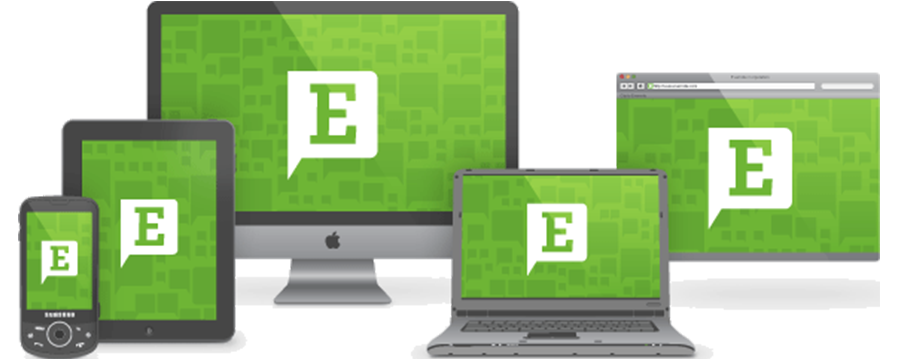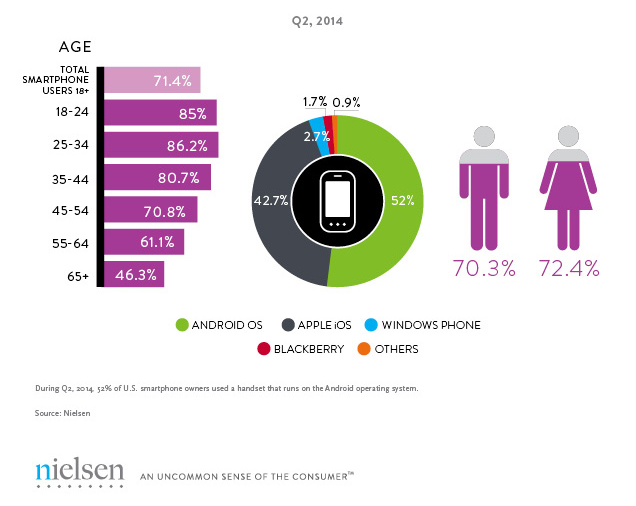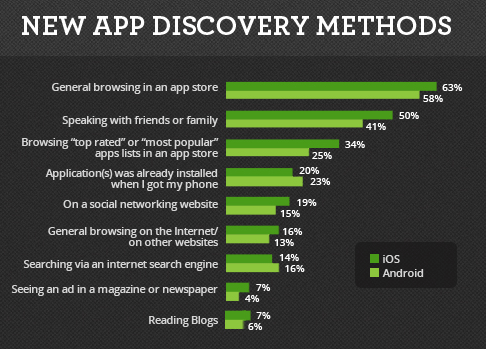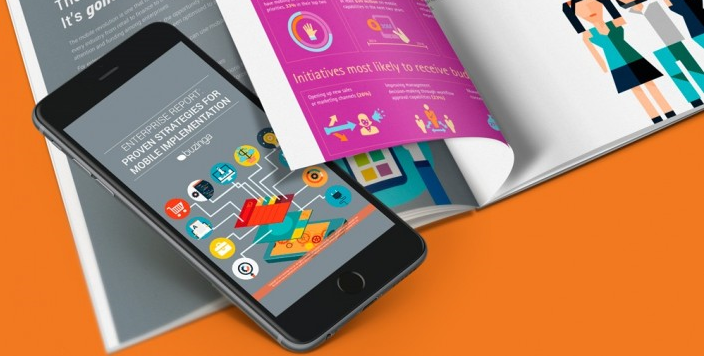10 Things Marketers Need To Know About Mobile Apps In 2016
Apps aren’t just animated mobile games for bored teenagers, or an add-on a business’ marketing campaign.
There is a succinct difference between a web-based marketing campaign and a mobile-centric marketing campaign.
Mobile-centric campaigns carry unique advantages that allow you to leverage real-time behaviours to achieve exponential results.
Mobile campaigns need to be designed with simplicity and the short attention span of mobile users in mind.
You need to assume that each mobile app campaign you design will have a different user experience in mind.
Patience is limited.
Building a mobile app is an investment and not a cheap exercise, so how can you justify spending money on mobile campaigns over other channels?
The best place to start is to get your head around these 10 better ways to do mobile marketing in 2016.
1. Mobile Is The Future Of Marketing
The mobile is the most personal device we own. In 2015 we were checking our phones every 85 times per day.
AND did you know that 80% of our time spent in our phone is in apps? Not in the web browser…
Time spent in mobile apps has already passed the time spent on desktop, with 70% of mobile users admitting to bringing their phone with them to the toilet.
Guilty.
In some parts of the world, particularly developing countries, mobile devices are the first and only device people actually own.
Epic!
For people who just want to read the news, check their email or shop, a mobile device is their preferred option.
Game of Phones
Virgin Mobile sent 40,000 users running after each other for over $200,000 in prizes, creating the worlds largest location-based mobile app competition, known as “Game of Phones.”
It resulted in over 2.5 million screen views in three weeks!
The app took advantage of “reality-based conditions”—namely, GPS—and in-app messaging to keep users playing.
Conveniently players could protect their prizes for up to an hour by entering a “safe house” (aka Virgin Mobile store).
2. Geo-Location
Geo-location marketing is the integration of geographical intelligence into various aspects of marketing.
All smartphones have GPS functionality, which means there’s a whole new world of location-based possibilities to tap into.
Want the user to do something when they’re in a certain area?
When they visit a certain store?
When they repeatedly visit the same area?
When multiple users visit the same area?
When they scan a barcode or image?
Location is one of the most exciting opportunities for marketers.
Although it isn’t new, it’s getting more much more sophisticated in terms of exact location and targeting opportunities.
This enables marketers to develop interesting and high-converting campaigns.
Let’s have a look at the ‘Meat Pack’ campaign, who designed the coolest geo-location targeting campaign I’ve ever heard of, called ‘Hijack.’
Meat Pack Case Study
Meat Pack is a shoe store in Guatemala, a brand known for its edgy style and its special discounts in limited edition shoes including brands like Adidas, Nike and Puma.
They wanted to launch a new promotion that lived up to their brand standards, characterised by innovation.
To promote the new discount they created Hijack, an enhancement for the official Meat Pack app used by their customers.
Using GPS tracking technology, Hijack recognised customers entering the official store of one of the brands sold at Meat Pack which triggered a special notice with a promotion that gave you the chance to earn your discount.
The discount would start at 99% and it would decrease by a percentage with each second that went by.
The countdown discount made people literally sprint across shopping centres in order to get to Meat Pack in time to beat the countdown.
The Results:
- More than 600 customers were hijacked from competing stores.
- One customer reached the store in 11 seconds, winning 89% off.
- All discounted merchandise sold in record time
Every time a customer redeemed the offer, it was also posted to their Facebook, informing everyone about the promotion.
This generated a viral campaign and encouraging people to download the Meat Pack app.
Don’t believe me? Watch the campaign video here.
3. Think Scalability
It’s easy for marketers to be led into the false sense that a mobile application will instantly increase their engagement with their customers.
As you can see from the case studies above, the best way to use mobile in a marketing strategy is to build an engaging and entertaining platform that aims to boost sales in a way that your website can’t.
Have a look at how your current services are being consumed by customers.
Are their parts of your portfolio that could be separated into an app that creates a new revenue stream?
The best way to do this is to take a small part of your business, gamify it and scale it from there.
But unfortunately, what often happens is marketers try to take a website and turn it into a mobile application.
And this doesn’t really work.
Why?
There’s three reasons:
- It takes more time for a customer to download and navigate their way through your mobile app, than it would for them to simply go on your website via their browser. This deters potential users from downloading your app.
- Mobile apps have to be specifically designed with a particular user experience in mind. If you simply duplicate your website and turn it into an app, you’re not providing any extra added value to compensate the effort of downloading the app. Remember, we as humans are lazy! We’ll do whatever takes us less time.
- You need to think ‘problem solving’. What you want to do is find a current problem that your customers or your business is experiencing that can be solved creatively, by building an engaging mobile app. Something that can’t be solved by simply having a website. Start off small, and then slowly increase your offerings.
Let’s take Evernote as an example.
This app aims to solve the issue of having too much paperwork in an office for simple tasks.
The application has grown from a place to just store notes, to enabling users to store photos, to-do lists, ideas, documents and voice reminders.
These are also synced across all devices (that’s what makes an application really powerful).
4. Research Your Market
You and I know that the majority of the Australian population spend more than 2 hours a day on their smartphone.
But, you can’t just assume that your target audience is in that majority!
Let’s use this case study as an example.
I won’t name the company, but it’s a well known horror story in the app industry.
About a year ago, a highly respected finance company spent over $85,000 building a cloud-based mobile app for their finance services.
And no-one used the app!
Their #1 mistake was that they didn’t research their market.
If they had, they would’ve found that the majority of their clients were over the age of 55 and weren’t familiar with using mobile apps.
And they certainly weren’t comfortable putting their financial details in a cloud environment.
For the app to have succeeded they would’ve had to re-position their company to attract younger clients.
In the end, they just threw thousands of dollars down the drain.
How to conduct a market analysis:
For a much more thorough framework, have a read of How To Estimate Market Size For An App Idea and User Persona Template: Marketing To A Mobile Audience.
Step 1.
What problem are you trying to solve?
Can this problem be solved by building a mobile application?
If the answer is yes, go and find out if your audience actually uses smartphones.
Make sure you research what platform they use (Are they iOS or Android users?) and how often they use it.
The age of your target market also plays a significant factor:
Step 2.
Build a prototype and take it to the market to get feedback before investing anymore time into development.
This validates the need for the app by getting objective data from real users, minimising the chance of wasting hundreds of thousands of dollars on something that customers didn’t want in the first place.
See also: The 3 Step Loop For Delivering Apps On Time And On Budget
Step 3.
Create the most minimal functional app you can, then scale from there.
5. Know Your Competitors
Do your competitors have an app?
Find out what’s working for them and what they aren’t doing so well at. Make sure you download the app and understand its functionality.
Understand what’s good and what’s bad, and take feedback from both.
Not only will this give you some ideas, it will also enable you to identify opportunities to gain a competitive advantage.
Useful tool: App Annie is a tool for gaining insights on the analytics of your competitors apps.
See also: How To Conduct Competitive Analysis On Apps
6. App Store Optimisation Is Critical
With over 2 million apps in the major app stores, gaining awareness of your app is one of the biggest issues you’ll face.
The App Store can be a great source to find new customers but it can also be a competitive nightmare.
Optimising your app for the App Store is critical for gaining and maintaining users and downloads for your app.
As you can see, 63% of new app discoveries come from app store searches.
The following are the most vital aspects of ASO to ensure your apps shows up in a search containing your keywords:
- Title: The keyword placed in the title should be the one with the heaviest search traffic.
- Keywords: To improve your search rankings, you need to know which keywords are relevant and used most often by your target audience.
- Images: Make sure you include pictures.
For more information, read Ranking #1 On The App Store: The Marketer’s Guide To App Store Optimisation
7. Know Your Cost Per Download
It’s one thing to develop an app, it’s another for you to market your app to achieve a positive ROI.
You must know what your cost per download is.
Your cost per download is all the marketing costs (E.g Social Media, etc), divided by the amount of people you got to download your app, as a direct result of those marketing activities.
So, if you have spent $500 on a Facebook campaign and have only generated 2 downloads for your app, your cost per download is $250…
Obviously this is not ideal! But it’s a simple way to explain it.
Check out this article: Framework For Measuring The Cost and ROI of Business Mobile Applications
8. Use social media in a measured, targeted way
Social media sites offer a fantastic opportunity to build an audience of potential customers.
You should focus your social media effort on both Facebook and Twitter seeing as:
- They have the most users.
- The majority of their users access the social networks from their mobile devices.
As part of a successful social media campaign for your app, you should be:
- Rewarding users for connecting with your app.
- Make a long term commitment to your social media audience.
- Keep your tone personal and relatable.
- Automate your social media where you can.
- Use a value-first approach to your content.
For more detailed information on how to run a successful Facebook and Twitter campaign to increase app downloads, check out our articles:
1. How To Use Twitter To Increase Your App Downloads
2. How to Use Facebook To Increase Your App Downloads
3. How To Use Facebook Ads To Ensure Your Mobile App’s Success
9. Consider In App Advertising
You need to look at the app landscape and focus on popular apps with frequent usability.
Here are 3 current successful in-app advertising strategies that you can use.
1. Become Part Of A Game
Microsoft recently ran a campaign for Windows Cloud in the game, GodFinger – All Stars.
Players of the game could visit the ‘Windows Cloud’ the same way that they could visit their friend’s planets.
During the 6 week campaign, 10% of the game’s players visited the Windows Cloud for a total of 6.1 million visits.
2. Bribe Game Players
Another approach, instead of blending into the game, is to ask players to watch an ad exchange for extra virtual in-game currency.
In a recent campaign, SocialVibe gave away currency for Zynga’s various games if users visited ‘The Big Game Tournament.’
The effort had the highest time-spent-per-user of any SocialVibe game to date — 170 seconds.
Due to these advertisements, SocialVibe received a $20 million cash infusion from Northwest Venture partners.
3. Build More Engaging Ads
The rise of mobile as the leading platform enables you to tailor advertising like never before.
It’s simply a matter of building more engaging advertisements that are ultra targeted.
The more personalised and targeted your advertisements are, the greater the response to your campaign will be.
10. Be Lean
The mobile platform holds a massive amount of opportunity but for many marketers, but it’s uncharted territory.
This means that you can’t rely on past experience or your gut feelings to build a successful app.
Ultimately, marketers need to use heavily researched data to build the app, and design it as simply and engaging as possible, before ramping it up.
You will need to rely on A/B testing and analytics for optimising both the in-app experience and all marketing interactions, such as push notifications.
An app isn’t always the solution, but it’s a proven method that engages new users and builds an invaluable database that you can utilise for future campaigns.
Learn how the pros are successfully achieving ROI on their mobile initiatives within 1 year by downloading our enterprise mobility report below…
Latest posts by Logan Merrick (see all)
- Ep 18: Collective Campus’ CEO on Intrapreneurship and Corporate Innovation - December 20, 2016
- 50 User Engagement Strategies For Planning Memorable Mobile Experiences - December 19, 2016
- Latest Data: App Monetisation Trends And Drivers 2015-2020 - November 25, 2016







